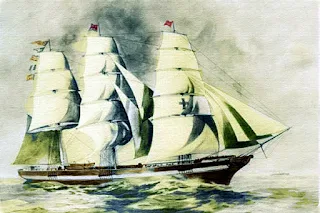 |
| Newgrange in Ireland via loveireland.com |
These are the darkest of days.
Overcast skies rob us of precious minutes of sunlight in the late afternoons. Veil the sunset in coal dust, ink black with a mist of rain swirling ‘round a 4:30 porch light.
We of northern latitudes and coastal storms hunch our shoulders and steel our minds against the short tongues of daylight wrapped in anemic gray, punctuated by occasional shards of sunlight, silver knives cutting through woolen clouds down to sodden earth.
This season of dwindling day, coldest days and chill, longest nights robbed of stars, December’s cruelty.
The days shrink and wither away, an erosion or life-giving hope that ebbs as we approach the nadir of the year. Winter solstice arrives Dec. 21st at 2:44 in the afternoon when the sun is directly over the Tropic of Capricorn. It is the shortest day of the year, late sunrises and early sunsets. Long nights of starless forever-skies.
It is the day when the Sun reaches its southernmost migration on our horizon. It is the first day of astronomical winter - yet from the solstice forward, each day will get fraction longer, each noon the sun will be a little higher in our horizon.
It has been a year full of darkness.
Long before it had a name, or before we really understood what was happening human beings understood this cycle of ebbing light.
I have stood inside Newgrange in Ireland - a 5,000 year old monumental structure of massive stones and white quartz designed to permit a shaft of light on the winter solstice such that on this one day each year - sunlight will travel down a 60 foot passageway and the interior of this man-made mountain will be illuminated with golden light.
Newgrange is older than stonehenge, older than the Great Pyramid of Giza. Men and women designed and built this complicated structure with stone imported from miles away. Intricate neolithic architecture celebrating light that marks the end of creeping darkness, the return of the hope.
We do not know the minds of Newgrange’s creators, nor their system of beliefs to be sure. We know only that they went to great effort to capture the sun on the solstice each year - to illuminate hidden decorations deep within.
We know a little more about other solstice traditions that came later.
Yule logs are a remnant of the Norse feast of Juul. Bonfires were lit as the sun “stood still” on its lowest point on the horizon. The fires heralded the return of the sun -- feasting would carry on while the Yule burned for days.
Yalda was an ancient Persian celebration of light over dark and the birth of the Sun God Mithra. Similar pre-Christian traditions exist around the world. In parts of Pakistan, the Kalash Kafir celebrate Chaomos -- a time ritual purification with torchlight parades and bonfires. Slavic traditions celebrate Koliada or Koleda in similar fashion.
Jewish families celebrate Hanukkah, the rededication of the second temple, lighting a candle each night in the festival of lights. Symbolizing knowledge and creation, here too was a miracle marked by light as a single night’s oil burned bright for eight days.
 |
| Lindsay as St Lucia |
Some Scandinavian countries still celebrate St Lucia’s Day -- a festival of lights that evolved out of Norse solstice traditions of lighting bonfires during the longest nights of the year. Honoring the Christian martyr St. Lucia, young girls dress in white robes with a wreath of burning candles on their heads and serve bright yellow saffron buns to signify the return of the sun.
Early Christians focused more on Easter than Jesus’ birth. It wasn’t until the 4th century that the Church decided to celebrate Christmas and fixed the date in December to coincide -- and perhaps co-opt -- the Roman celebrations of Saturnalia and Sol Invictus -- the birthday of the “unconquered sun.” As Christianity spread, the birth of the son of God and the festivals that celebrated the return of the sun co-mingled and influenced each other.
We fight against the darkness with artificial light. We string up our Christmas tree, light the candles on our menorah or advent wreaths. We make a fire in the fireplace, yule log, bonfire.
It is perhaps not surprising that these cold dark days are when our hearts are most open to our fellow man, when we give a little more, care a little more. Charity and cheer, generosity and forgiveness are built into all of these solstice traditions because it is understood that in the darkness is when we most need the light.
This is a dark time for our nation and for the world.
Hatred has sunk its teeth into our flesh. Many of our brothers have turned a cold eye to those who don’t look like us, worship like us, love like us. We point fingers rather than open our arms. Hopelessness and fear threaten to curdle our goodwill.
In these darkest days, we can be the light that travels down the cold stone passage, that illuminates the darkness and brings hope of better days.
We can be the light that opens hearts with kindness, charity and goodwill to our neighbors around the world and in our backyard.
We may never know the words or ceremony of 5000 years past or exactly how that thread may be woven into our modern traditions and beliefs.
Yet we understand the need to capture the golden light in darkest December days.
-30-
This article originally appeared in the The Daily Astorian on December 19, 2016










